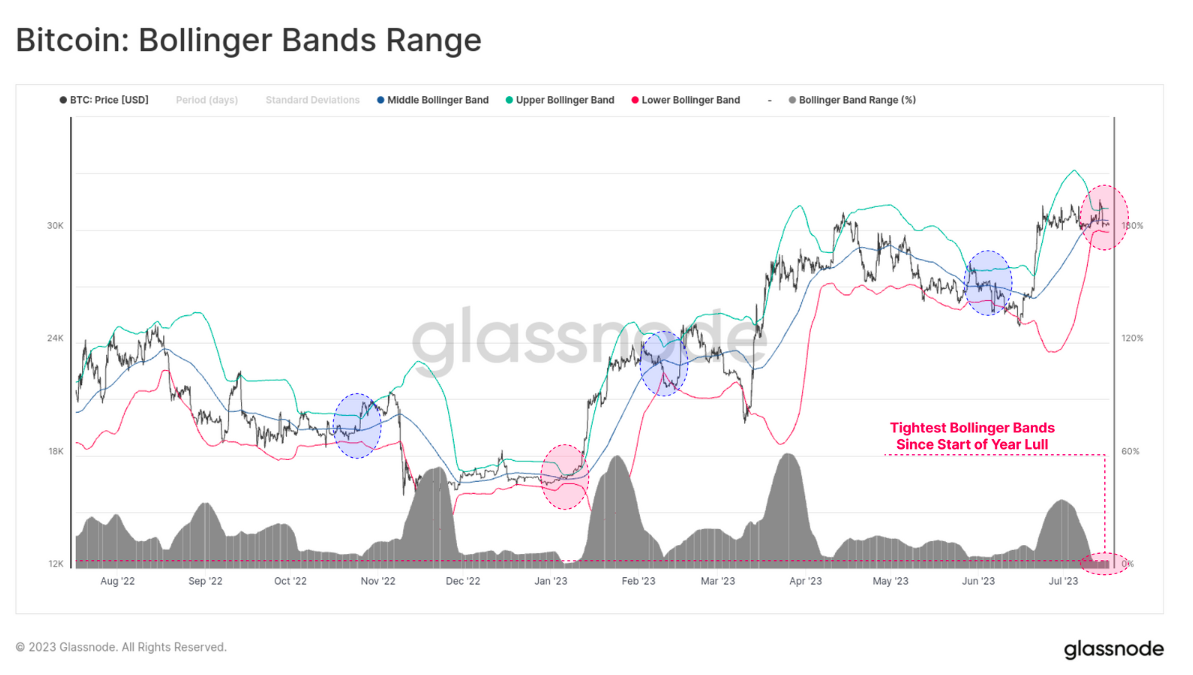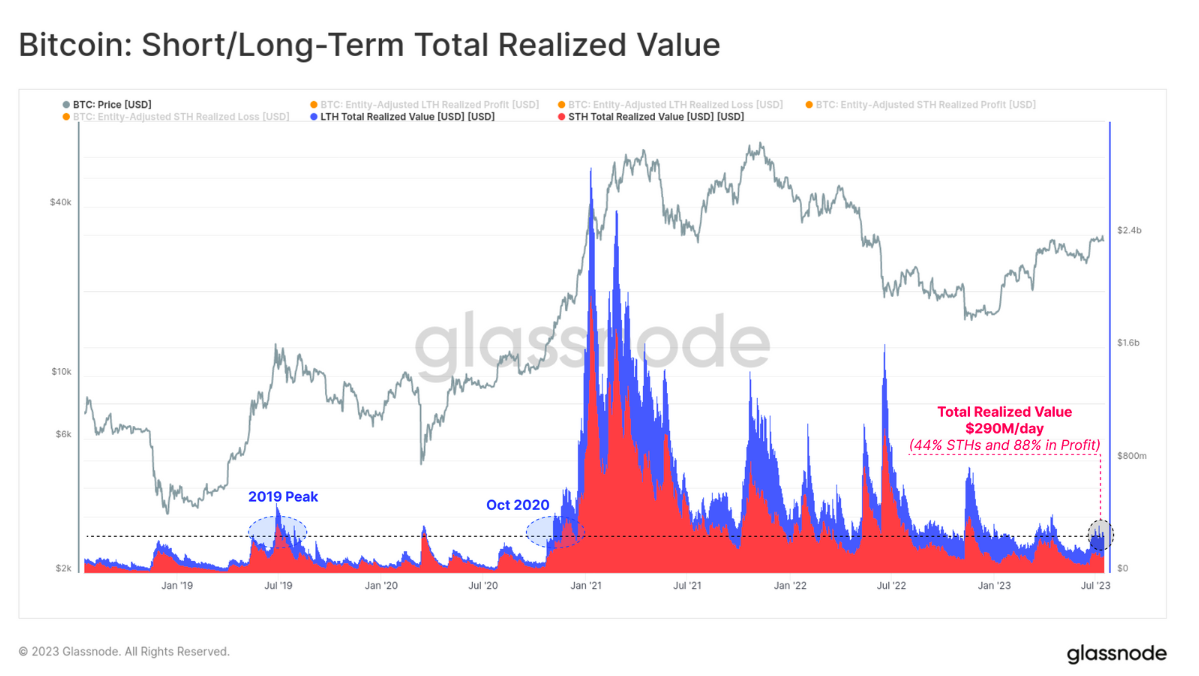Bitcoin (BTC) is lining up a burst of volatility that could rival its 40% January gains, on-chain data suggests.
In the latest edition of its weekly newsletter, “The Week On-Chain,” analytics firm Glassnode revealed the tightest Bollinger Bands since the start of 2023.
BTC price due "strong moves" — but direction unknown
BTC price has acted in a tight range for an entire month, using $30,000 as a focal point for sideways behavior.
This, popular analyst Aksel Kibar says, is putting both bulls and bears to the test.
“Seems like $BTCUSD is exhausting many trader's patience,” he summarized on July 21.
“That is usually the condition you see before strong moves. Not sure about the direction though. I will stick with my well-defined boundaries. I know that increased volatility is around the corner. Capture the directional move.”

According to Bollinger Bands behavior, that move should come sooner rather than later.
The classic volatility indicator is currently printing a telltale sign that the days of rangebound BTC price action are numbered.
Bollinger Bands use standard deviation around a simple moving average to determine when an asset’s price is due a shift in trend.
On BTC/USD, its upper and lower band are unusually close together at present — more compact, in fact, than at any time since Bitcoin began its 2023 upside.
“The digital asset market continues to see remarkably little volatility, with the classic 20-day Bollinger Bands experiencing an extreme squeeze,” “The Week On-Chain” commented.
It added that with a range of just 4.2%, this marked the “quietest BTC market since the lull in early January.”
At the time, Bitcoin saw a breakout which then continued throughout the month, bringing January gains to around 40%.

Bitcoin hodlers channel early 2019
Continuing, Glassnode noted that at current levels, there was little by way of active selling — either for profit or loss.
Related: Bitcoin rejects at 21-day trendline — How low can BTC price go?
This lack of “realized” activity comes despite the BTC price gains since January, and is a historically common phenomenon in periods after price cycle lows.
“This compression in volatility is matched by cyclical lows in realized profit and loss being locked in by the market,” it wrote.
The sum of profits plus losses currently equals around $290 million per day.
“Whilst this is a significant sum on a nominal basis, it is again comparable to the 2019 peak, and to October 2020 where BTC prices were 50% lower than they currently are,” Glassnode explained.
“As such, it suggests that even though the Bitcoin market cap is ~2x larger today, investors who are holding large profits or losses are extremely unwilling to spend their coins on-chain.”

by cointelegraph
Visit leading cryptocurrency exchanges:
#1 OKX - 24h Volume: $ 1 097 255 972.
OKX is an Hong Kong-based company founded in 2017 by Star Xu. Not available to users in the United States.
#2 ByBit - 24h Volume: $953 436 658.
It is headquartered in Singapore and has offices in Hong Kong and Taiwan. Bybit works in over 200 countries across the globe with the exception of the US.
#3 Gate.io - 24h Volume: $ 643 886 488.
The company was founded in 2013. Headquartered in South Korea. Gate.io is not available in the United States.
#4 MEXC - 24h Volume: $ 543 633 048.
MEXC was founded in 2018 and gained popularity in its hometown of Singapore. US residents have access to the MEXC exchange.
#5 KuCoin - 24h Volume: $ 513 654 331.
KuCoin operated by the Hong Kong company. Kucoin is not licensed to operate in the US.
#6 Huobi - 24h Volume: $ 358 727 945.
Huobi Global was founded in 2013 in Beijing. Headquartered in Singapore. Citizens cannot use Huobi in the US.
#7 Bitfinix - 24h Volume: $ 77 428 432.
Bitfinex is located in Taipei, T'ai-pei, Taiwan. Bitfinex is not currently available to U.S. citizens or residents.
My bitcoin-blog: https://sites.google.com/view/my-crypto-jam/
=) |


 新浪微博
新浪微博 QQ空间
QQ空间 人人网
人人网 腾讯微博
腾讯微博 Facebook
Facebook Google+
Google+ Plurk
Plurk Twitter
Twitter Line
Line